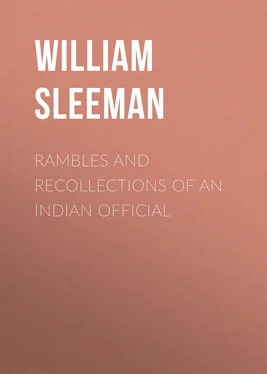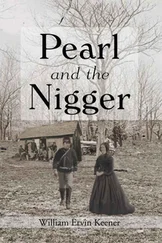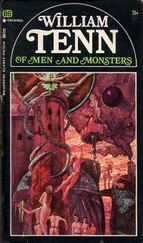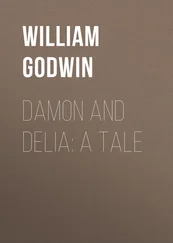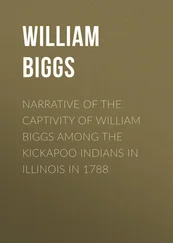William Sleeman - Rambles and Recollections of an Indian Official
Здесь есть возможность читать онлайн «William Sleeman - Rambles and Recollections of an Indian Official» — ознакомительный отрывок электронной книги совершенно бесплатно, а после прочтения отрывка купить полную версию. В некоторых случаях можно слушать аудио, скачать через торрент в формате fb2 и присутствует краткое содержание. Жанр: Путешествия и география, История, foreign_edu, foreign_antique, foreign_prose, на английском языке. Описание произведения, (предисловие) а так же отзывы посетителей доступны на портале библиотеки ЛибКат.
- Название:Rambles and Recollections of an Indian Official
- Автор:
- Жанр:
- Год:неизвестен
- ISBN:нет данных
- Рейтинг книги:4 / 5. Голосов: 1
-
Избранное:Добавить в избранное
- Отзывы:
-
Ваша оценка:
- 80
- 1
- 2
- 3
- 4
- 5
Rambles and Recollections of an Indian Official: краткое содержание, описание и аннотация
Предлагаем к чтению аннотацию, описание, краткое содержание или предисловие (зависит от того, что написал сам автор книги «Rambles and Recollections of an Indian Official»). Если вы не нашли необходимую информацию о книге — напишите в комментариях, мы постараемся отыскать её.
Rambles and Recollections of an Indian Official — читать онлайн ознакомительный отрывок
Ниже представлен текст книги, разбитый по страницам. Система сохранения места последней прочитанной страницы, позволяет с удобством читать онлайн бесплатно книгу «Rambles and Recollections of an Indian Official», без необходимости каждый раз заново искать на чём Вы остановились. Поставьте закладку, и сможете в любой момент перейти на страницу, на которой закончили чтение.
Интервал:
Закладка:
Note e . The causes which led to the sign of Sol in Leo becoming the arms of Persia cannot be distinctly traced, but there is reason to believe that the use of this symbol is not of very great antiquity. We meet with it upon the coins of one of the Seljukian princes of Iconium; and, when this family had been destroyed by Hulākū [A.D. 1258], the grandson of Chengiz, that prince, or his successors, perhaps adopted this emblem as a trophy of their conquest, whence it has remained ever since among the most remarkable of the royal insignia. A learned friend, who has a valuable collection of Oriental coins, and whose information and opinion have enabled me to make this conjecture, believes that the emblematical representation of Sol in Leo was first adopted by Ghiās-ud-din Kai Khusrū bin Kaikobād, who began to reign A.H. 634, A.D. 1236, and died A.H. 642, A.D. 1244; and this emblem, he adds, is supposed to have reference either to his own horoscope or to that of his queen, who was a princess of Georgia.
Note f . Hanway states, vol. i, p. 199, that over the gate which forms the entrance of the palace built by Shah Abbās the Great [A.D. 1586 to 1628] at Ashrāf, in Mazenderan, are 'the arms of Persia, being a lion, and the sun rising behind it'.
Note g . The emblem of the Lion and Sun is upon all the banners given to the regular corps of infantry lately formed. They are presented to the regiments with great ceremony. A mūllā, or priest, attends, and implores the divine blessing on them.
Note h . This order, with additional decorations, has been lately conferred upon several ministers and representatives of European Governments in alliance with Persia.
Note i . The medals which have been struck with this symbol upon them have been chiefly given to the Persian officers and men of the regular corps who have distinguished themselves in the war with the Russians. An English officer, who served with these troops, informs me that those on whom these medals have been conferred are very proud of this distinction, and that all are extremely anxious to obtain them ( History of Persia , ed. 1829, vol. ii, p. 406).
In Curzon's figure the lion is standing, not 'couchant', as stated by Malcolm, and grasps a scimitar in his off forepaw.
280
A purōhit is a Brahman family priest.
281
Four hundred thousand rupees, worth at that time more than forty thousand pounds sterling.
282
The magistrate was the author.
283
'That' in author's text.
284
The water of the Ganges, with which the image of the god Vishnu has been washed, is considered a very holy draught, fit for princes. That with which the image of the god Siva, alias Mahādēo, is washed must not be drunk. The popular belief is that in a dispute between him and his wife, Pārvatī, alias Kālī, she cursed the person that should thenceforward dare to drink of the water that flowed over his images on earth. The river Ganges is supposed to flow from the top-knot of Siva's head, and no one would drink of it after this curse, were it not that the sacred stream is supposed to come first from the heel of Vishnu, the Preserver. All the little images of Siva, that are made out of stones taken from the bed of the Nerbudda river, are supposed to be absolved from this curse, and water thrown upon them can be drunk with impunity. [W. H. S.] The natural emblems of Siva, the Bāna-linga quartz pebbles found in the Nerbudda, have already been referred to in the note to Chapter 19, ante , note 9. In the Marāthā country the 'household gods' generally comprise five sacred symbols, namely, the sālagrāma stone of Vishnu, the bāna-linga of Siva, a metallic stone representing the female principle in nature (Sakti), a crystal representing the sun, and a red stone representing Ganesh, the remover of obstacles. The details of the tiresome ritual observed in the worship of these objects occupy pp. 412 to 416 of Monier Williams's Religious Thought and Life in India .
285
'Beearee' in author's text.
286
Then worth more than thirty thousand pounds sterling.
287
On the customs of the sweeper caste, see ante , Chapter 8, following note [11].
288
The Parihārs were the rulers of Bundēlkhand before the Chandēls. The chief of Uchhahara belongs to this clan.
289
Wealthy Hindoos, throughout India, spend money in the same ceremonies of marrying the stone to the shrub. [W. H. S.] Three lakhs of rupees were then worth thirty thousand pounds sterling or more.
290
The numerous clans, more or less devoted to war, grouped together under the name of Rājpūts (literally 'king's sons'), are in reality of multifarious origin, and include representatives of many races. They are the Kshatriyas of the law- books, and are still often called Chhattrī (E.H.I. , 3rd ed., pp. 407-15). In some parts of the country the word Thākur is more familiar as their general title. Thirty-six clans are considered as specially pure-blooded and are called, at any rate in books, the 'royal races'. All the clans follow the custom of exogamy. The Chandēls (Chandella) ruled Bundēlkhand from the ninth to the thirteenth centuries. Their capital was Mahoba, now a station on the Midland Railway. The Bundēlas became prominent at a later date, and attained their greatest power under Chhatarsāl ( circa A.D. 1671-1731). Their territory is now known as Bundēlkhand. The country so designated is not an administrative division. It is partly in the United Provinces, partly in the Central Provinces, and partly in Native States. It is bounded on the north by the Jumna; on the north and west by the Chambal river; on the south by the Central Provinces, and on the south and east by Rīwā and the Kaimūr hills. The traditions of both the Bundēlas and Chandellas show that there is a strain of the blood of the earlier, so—called aboriginal, races in both clans. The Pawār (Pramara) clan ranks high, but is now of little political importance (See N.W.P. Gazetteer , 1st ed., vol. vii, p. 68).
291
The paramount power often assigned a portion of its reserved lands in 'Jāgīr' to public officers for the establishments they required for the performance of the duties, military or civil, which were expected from them. Other portions were assigned in rent-free tenure for services already performed, or to favourites; but, in both cases, the rights of the village or land owner, or allodial proprietors, were supposed to be unaffected, as the Government was presumed to assign only its own claim to a certain portion as revenue. [W. H. S.] The term 'ryotwar' (raiyatwār) is commonly used to designate the system under which the cultivators hold their lands direct from the State. The subject of tenures is further discussed by the author in Chapters 70, 71.
292
For elaborate comparisons between the Rājpūt policy and the feudal system of Europe, Tod's Rajasthān may be consulted. The parallel is not really so close as it appears to be at first sight. In some respects the organization of the Highland clans is more similar to that of the Rājpūts than the feudal system is. The Chambal river rises in Mālwā, and, after a course of some five hundred and seventy miles, falls into the Jumna forty miles below Etāwa. The statement in the text concerning the succession of clans is confused. The ruling family of Rīwā still belongs to the Baghēl clan. The Maharājā of Jaipur (Jeypore) is a Kachhwāha.
Читать дальшеИнтервал:
Закладка:
Похожие книги на «Rambles and Recollections of an Indian Official»
Представляем Вашему вниманию похожие книги на «Rambles and Recollections of an Indian Official» списком для выбора. Мы отобрали схожую по названию и смыслу литературу в надежде предоставить читателям больше вариантов отыскать новые, интересные, ещё непрочитанные произведения.
Обсуждение, отзывы о книге «Rambles and Recollections of an Indian Official» и просто собственные мнения читателей. Оставьте ваши комментарии, напишите, что Вы думаете о произведении, его смысле или главных героях. Укажите что конкретно понравилось, а что нет, и почему Вы так считаете.
